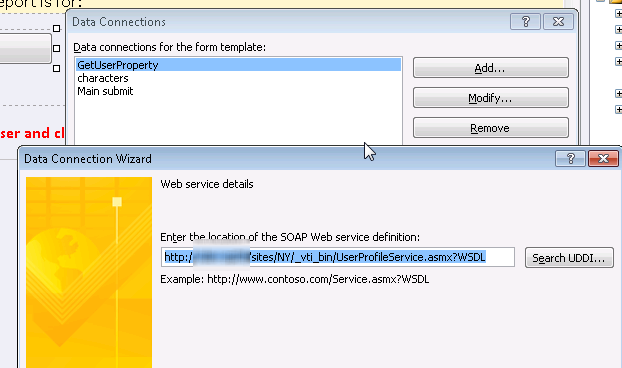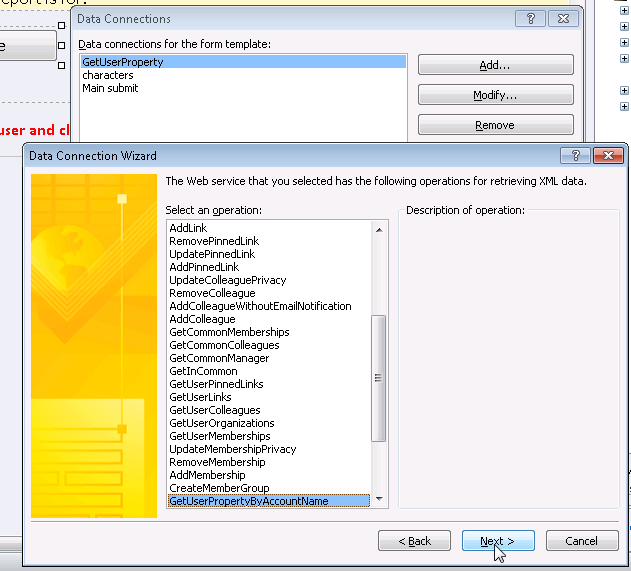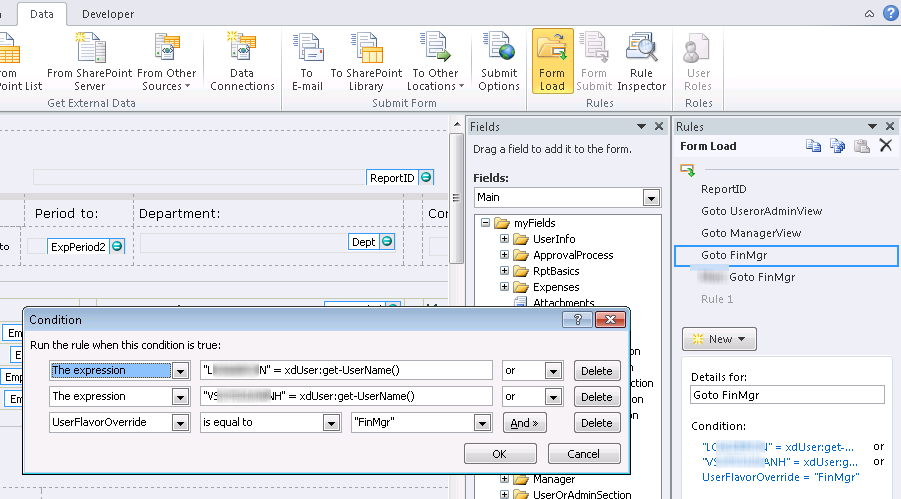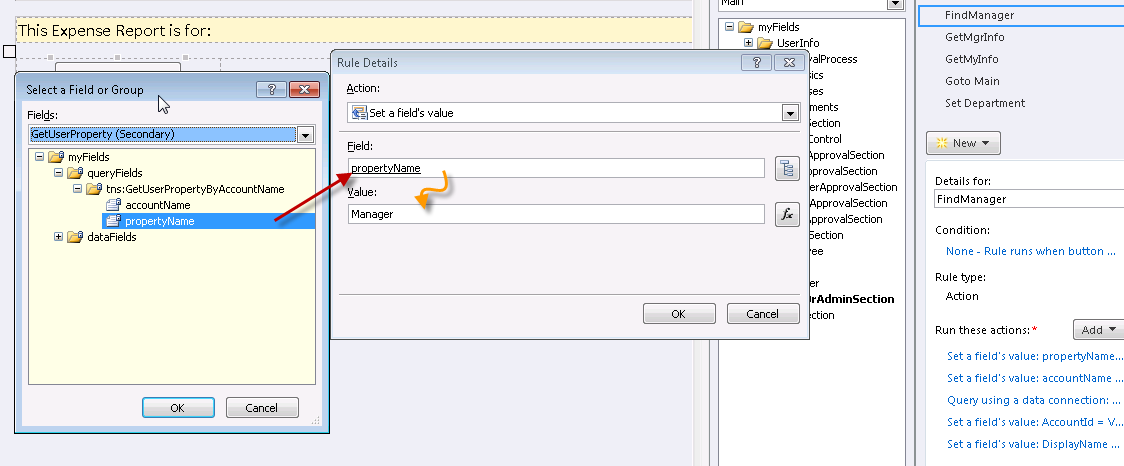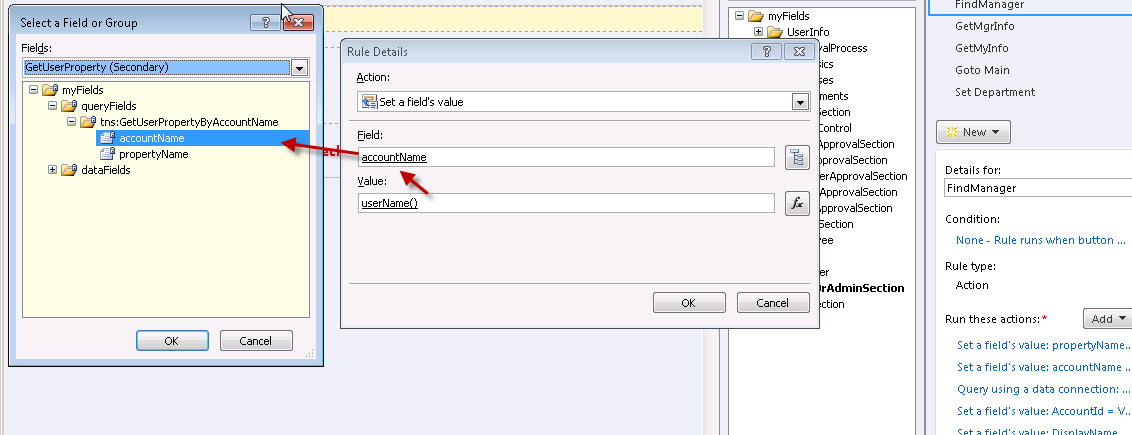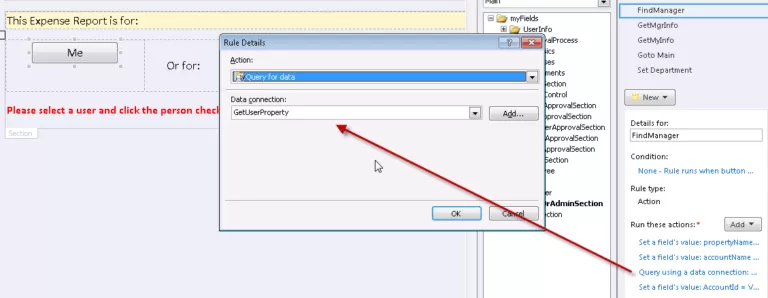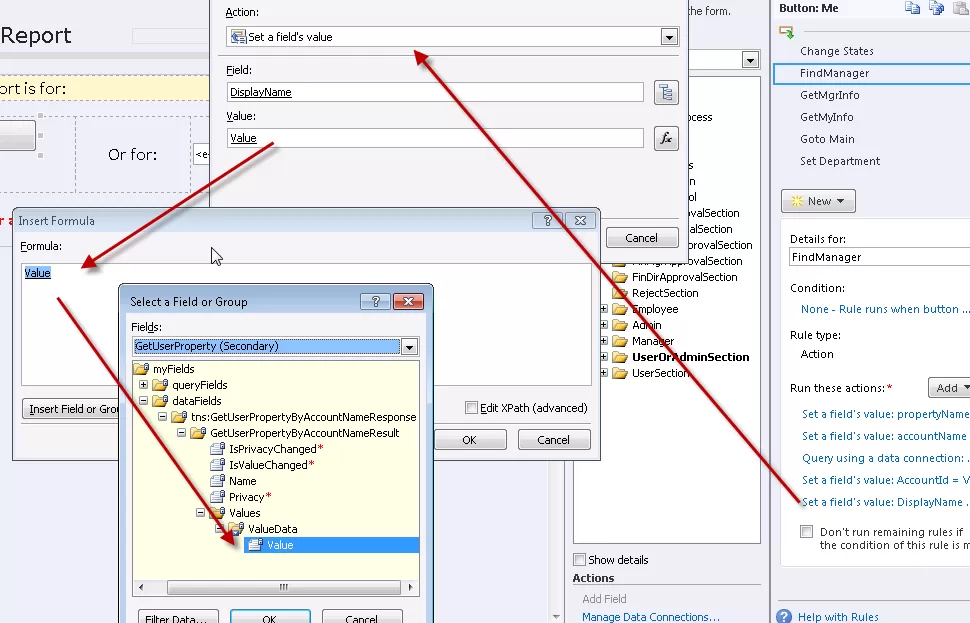Managing SharePoint Groups in PowerShell
SharePoint Groups are a great mechanism for managing user permissions, however they exist within a single site collection. What if you have hundreds of site collections? We can easily script a range of common operations.
I prefer to use a CSV fed approach to manage groups and users. I create a CSV with the name of the group, and the users, which I list in pipe separated format (commas are already being used for the CSV). To read in a CSV use:
Import-Csv "L:PowerShellAD and SP group mapping.csv" |
Let’s get the Site, Root Web, as well as an SPUser for the group owner, and get the groups object:
$Site = New-Object Microsoft.SharePoint.SPSite($SiteName) write-host $site.Url $rootWeb = $site.RootWeb; $Owner = $rootWeb.EnsureUser($OwnerName) $Groups = $rootWeb.SiteGroups; |
Here’s how to add a Group:
$Groups.Add($SPGroupName, $Owner, $web.Site.Owner, “SharePoint Group to hold AD group for Members") |
Here’s how to give the group Read access, for example:
$GroupToAddRoleTo = $Groups[$SPGroupName] if ($GroupToAddRoleTo) #if group exists { $MyAcctassignment = New-Object Microsoft.SharePoint.SPRoleAssignment($GroupToAddRoleTo) $MyAcctrole = $RootWeb.RoleDefinitions["Read"] $MyAcctassignment.RoleDefinitionBindings.Add($MyAcctrole) $RootWeb.RoleAssignments.Add($MyAcctassignment) } |
Here’s how to add a Member to a Group:
$UserObj = $rootWeb.EnsureUser($userName); if ($UserObj) #if it exists { $GroupToAddTo.addUser($UserObj) } |
Note that a duplicate addition of a member is a null-op, throwing no errors.
Here’s how to remove a member:
$UserObj = $rootWeb.EnsureUser($userName); if ($UserObj) { $GroupToAddTo.RemoveUser($UserObj) } |
Here’s how to remove all the members from a given group. This wipes the users from the whole site collection, so use this approach with care and consideration:
$user1 = $RootWeb.EnsureUser($MyUser) try { $RootWeb.SiteUsers.Remove($MyUser) $RootWeb.update() } |
Here’s the full script, with flags to setting the specific actions described above:
Add-PSSnapin "Microsoft.SharePoint.PowerShell" -ErrorAction SilentlyContinue # uses feedfile to load and create set of SharePoint Groups. $mylogfile="L:PowerShellongoinglogfile.txt" $ADMap= Import-Csv "L:PowerShellAD and SP group mapping.csv" $OwnerName = "DOMAIN/sp2013farm" $AddGroups = $false; $AddMembers = $false; # optionally populates those groups, Comma separated list $GrantGroupsRead = $true; #grants read at top rootweb level $RemoveMembers = $false; # optionally removes Comma separated list of users from the associated group $WipeMembers = $false; # wipes the groups clean $WipeUsersOutOfSite = $false; #The Nuclear option. Useful to eliminate AD groups used directly as groups #we do not need a hashtable for this work, but let's load it for extensibility $MyMap=@{} #load CSV contents into HashTable for ($i=0; $i -lt $AD.Count; $i++) { $MyMap[$ADMap[$i].SharePoint Group] = $ADMap[$i].ADGroup; } # Script changes the letter heading for each site collection $envrun="Dev" # selects environment to run in if ($envrun -eq "Dev") { $siteUrl = "h ttp://DevServer/sites/" $mylogfile="L:PowerShellongoinglogfile.txt" $LoopString = "A,B,C,D,E,F,G,H,I,J,K,L,M,N,O,P,Q,R,S,T,U,V,W,X,Y,Z" $LoopStringArr = $LoopString.Split(“,”) } elseif ($envrun -eq "Prod") { $siteUrl = "ht tp://SharePoint/sites/" $mylogfile="L:PowerShellongoinglogfile.txt" $LoopString = "A,B,C,D,E,F,G,H,I,J,K,L,M,N,O,P,Q,R,S,T,U,V,W,X,Y,Z" $LoopStringArr = $LoopString.Split(“,”) } else { Write-Host "ENVIRONMENT SETTING NOT VALID: script terminating..." $siteUrl = $null; return; } Write-Host "script starting" $myheader = "STARTING: $(get-date)" foreach ($letter in $LoopStringArr) { $SiteName=$siteurl+$letter $Site = New-Object Microsoft.SharePoint.SPSite($SiteName) write-host $site.Url $rootWeb = $site.RootWeb; $Owner = $rootWeb.EnsureUser($OwnerName) $Groups = $rootWeb.SiteGroups; for ($ADi = 0; $ADi -lt $ADMap.count; $ADi++) { $SPGroupName = $ADMap[$ADi].SharePoint Group; if ($AddGroups) { if (!$Groups[$SPGroupName]) #no exist, so create { try { $Groups.Add($SPGroupName, $Owner, $web.Site.Owner, “SharePoint Group to hold AD group members") } catch { Write-Host -ForegroundColor DarkRed "Ouch, could not create $($SPgroupName)" } } else { Write-Host -ForegroundColor DarkGreen "Already exists: $($SPgroupName)" } } #endif Add Groups if ($GrantGroupsRead) { $GroupToAddRoleTo = $Groups[$SPGroupName] if ($GroupToAddRoleTo) #if group exists { $MyAcctassignment = New-Object Microsoft.SharePoint.SPRoleAssignment($GroupToAddRoleTo) $MyAcctrole = $RootWeb.RoleDefinitions["Read"] $MyAcctassignment.RoleDefinitionBindings.Add($MyAcctrole) $RootWeb.RoleAssignments.Add($MyAcctassignment) } #if the group exists in the first place } #ActionFlagTrue if ($AddMembers) { $GroupToAddTo = $Groups[$SPGroupName] if ($GroupToAddTo) #if group exists { $usersToAdd = $ADMap[$ADi].ADGroup; if ($usersToAdd.length -gt 0) #if no users to add, skip { $usersToAddArr = $usersToAdd.split("|") foreach ($userName in $usersToAddArr) { try { $UserObj = $rootWeb.EnsureUser($userName); if ($UserObj) { $GroupToAddTo.addUser($UserObj) #dup adds are a null-op, throwing no errors } } catch { Write-Host -ForegroundColor DarkRed "cannot add user ($($userName) to $($GroupToAddTo)" } } } #users to add } #if the group exists in the first place } #ActionFlagTrue if ($RemoveMembers) { $GroupToAddTo = $Groups[$SPGroupName] if ($GroupToAddTo) #if group exists { $usersToAdd = $ADMap[$ADi].SharePoint Group; if ($usersToAdd.length -gt 0) #if no users to add, skip { $usersToAddArr = $usersToAdd.split("|") foreach ($userName in $usersToAddArr) { try { $UserObj = $rootWeb.EnsureUser($userName); if ($UserObj) { $GroupToAddTo.RemoveUser($UserObj) #dup adds are a null-op, throwing no errors } } catch { Write-Host -ForegroundColor DarkRed "cannot add user ($($userName) to $($GroupToAddTo)" } } } #users to add } #if the group exists in the first place } #ActionFlagTrue if ($WipeMembers) #Nukes all users in the group { $GroupToAddTo = $Groups[$SPGroupName] if ($GroupToAddTo) #if group exists { foreach ($userName in $GroupToAddTo.Users) { try { $UserObj = $rootWeb.EnsureUser($userName); if ($UserObj) { $GroupToAddTo.RemoveUser($UserObj) #dup adds are a null-op, throwing no errors } } catch { Write-Host -ForegroundColor DarkRed "cannot remove user ($($userName) to $($GroupToAddTo)" } } } #if the group exists in the first place } #ActionFlagTrue if ($WipeUsersOutOfSite) #Nukes all users in the group { $usersToNuke = $ADMap[$ADi].ADGroup; if ($usersToNuke.length -gt 0) #if no users to add, skip { $usersToNukeArr = $usersToNuke.split("|") foreach ($MyUser in $usersToNukeArr) { try { try { $user1 = $RootWeb.EnsureUser($MyUser) } catch { Write-Host "x1: Failed to ensure user $($MyUser) in $($Site.url)" } try { $RootWeb.SiteUsers.Remove($MyUser) $RootWeb.update() } catch { Write-Host "x2: Failed to remove $($MyUser) from all users in $($Site.url)" } } catch { Write-Host "x4: other failure for $($MyUser) in $($Site.url)" } } #if user is not null } #foreach user to nuke } #ActionFlagTrue } $rootWeb.dispose() $site.dispose() } #foreach site |
Start Your SharePoint Online Project in a Click
Our technology and wide delivery footprint have created billions of dollars in value for clients globally and are widely recognized by industry professionals and analysts.




